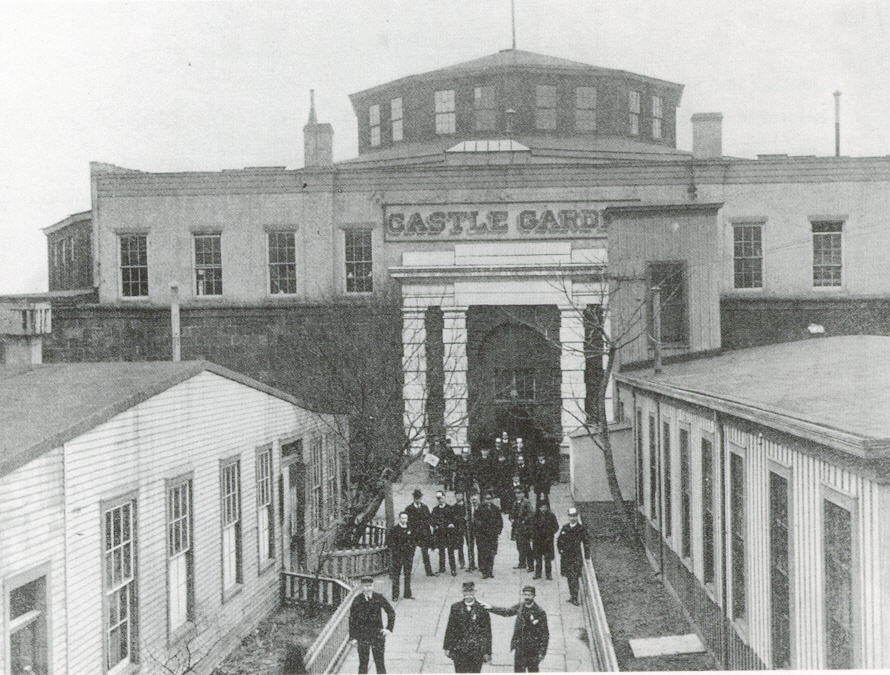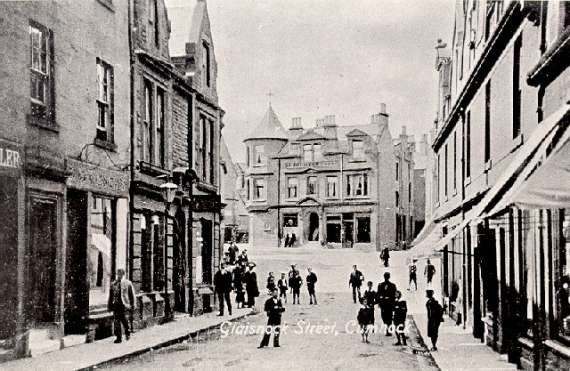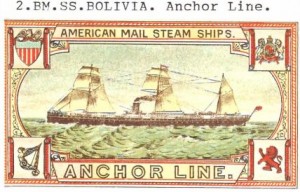I have been busy the last few weeks and will have even less time starting next week, as I embark on a 4- to 6-month research project. Rather than working from my home office, instead I will be at another location, which means my self-imposed blogging schedule will suffer. In the short term, I plan to post excerpts from my Judge family newsletter. Who knows – maybe a new relative will surface!
This excerpt begins with my great-grandfather, Brown Judge, who married my great-grandmother in Londonderry, Northern Ireland, in 1866.
Like many Americans, one of my ancestors came to the United States as an immigrant in the 19th century. Between 1880 and 1890, more than 5 million immigrants arrived in the United States. Most came through Castle Garden in New York, an old fort at the lower tip of Manhattan. It was through this port in the summer of 1880 that Brown Judge arrived to settle into a new life in America. The image below shows his name as it appeared on the passenger manifest of the SS Bolivia. His story and that of his family unfolds over the next few postings.
Castle Garden, New York
Once known as Castle Clinton, an artillery defense fort at the lower tip of Manhattan, Castle Garden was America’s first center for processing immigrants. Prior to its opening, immigrants arrived on the docks only to be accosted by crooked boarding-house keepers, scam artists who sold phony tickets, and thieves who stole their luggage. To protect the immigrants and to better control their entry, authorities opened Castle Garden in 1855. By 1890 it could no longer handle the increasing number of arrivals and was closed. Two years later, the Federally-operated Ellis Island immigration station opened its doors.
Old Cumnock, Scotland
Brown Judge lived with his wife Sarah and their children in Old Cumnock, Ayrshire, Scotland from 1867 until 1880. Both coal and ironstone mining were an important part of the economy in the mid-1800s, but increasing unrest over the poor working and living conditions resulted in strikes that swept the region in the late 1800s. Glaisnock Street, pictured below, is where the Judge family was living in 1871.
Fall Brook, Pennsylvania
Created by the Fall Brook Coal Company in 1860, the village of Fall Brook is nestled in north-central Pennsylvania in Tioga County, about 50 miles south of Elmira, New York. The discovery of bituminous coal in the county launched the spread of small mines through much of the area, and by 1880, when Brown Judge arrived, the output of coal production had soared to 1 million tons. Fall Brook’s population numbered about 1,000 people by then. Now it is all but a ghost town.
From Scotland to America
Brown Judge could not have arrived in America on a more gorgeous day. The weather was perfect. Only the day before, New York had been celebrating Decoration Day (now Memorial Day) with the rest of the nation, after stormy weather had swept through the region. As the SS Bolivia neared its destination with more than 700 passengers aboard, flags and buntings decorated the city’s monuments and the graves of its soldiers. On June 1, 1880, there was no welcoming Statue of Liberty, as she was still 6 years away from her dedication. Instead, the new immigrants were greeted with a view of the trees and lawns of Battery Park, and a rotunda-shaped building at the water’s edge: Castle Garden. For Brown Judge and his fellow passengers, there was still one more hurdle to pass – a medical inspection – before moving on to their final destinations.
~to be continued in future posts





Hi there.
I enjoyed reading your blog mentioning your ancestors arrival in New York.
My great grandfather William Cumming was in the crew of the SS Bolivia during that whole year, and would have been on board and delivered the human cargo safely. He was an Engineer who went migrated to Australia and became a builder of many steam ships in Glagow & England most of which he would deliver to Melbourne. He was the Superintendent Engineer for the Huddart Parker lines which operated in Aust. & New Zealand. He died in 1914 after 40 years in shipping. I have hundreds of papers and plans etc from his career which I am cataloguing with a view to creating a history of his career, the steam-ships, and shipbuilding etc.
it would be wonderful to hear from you, and perhaps add something of your family history in our story. Yours sincerely. Bruce Cumming, Australia
PS by coincidence, many of my mothers ancestors came from Old and New Cumnock during the same period as your family.